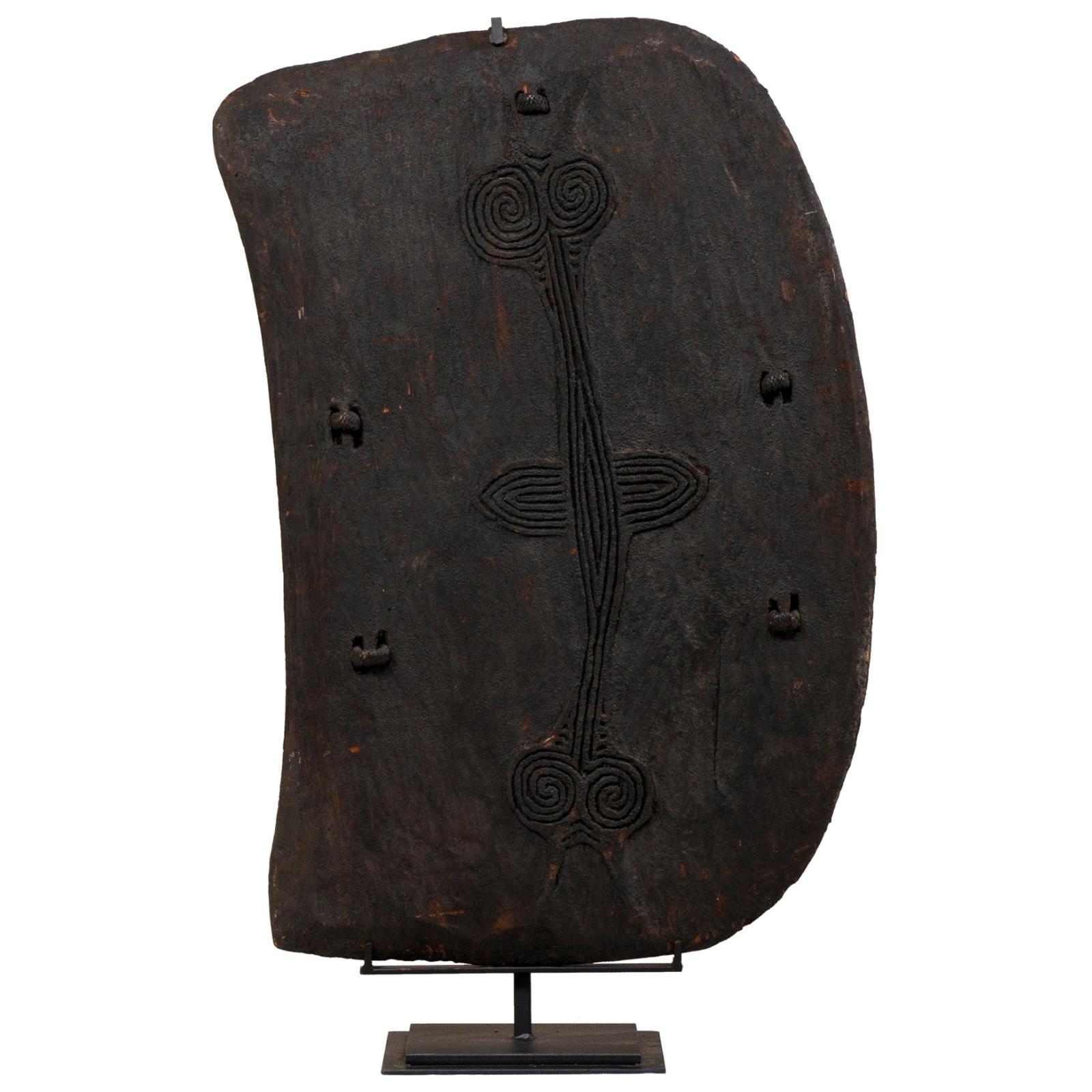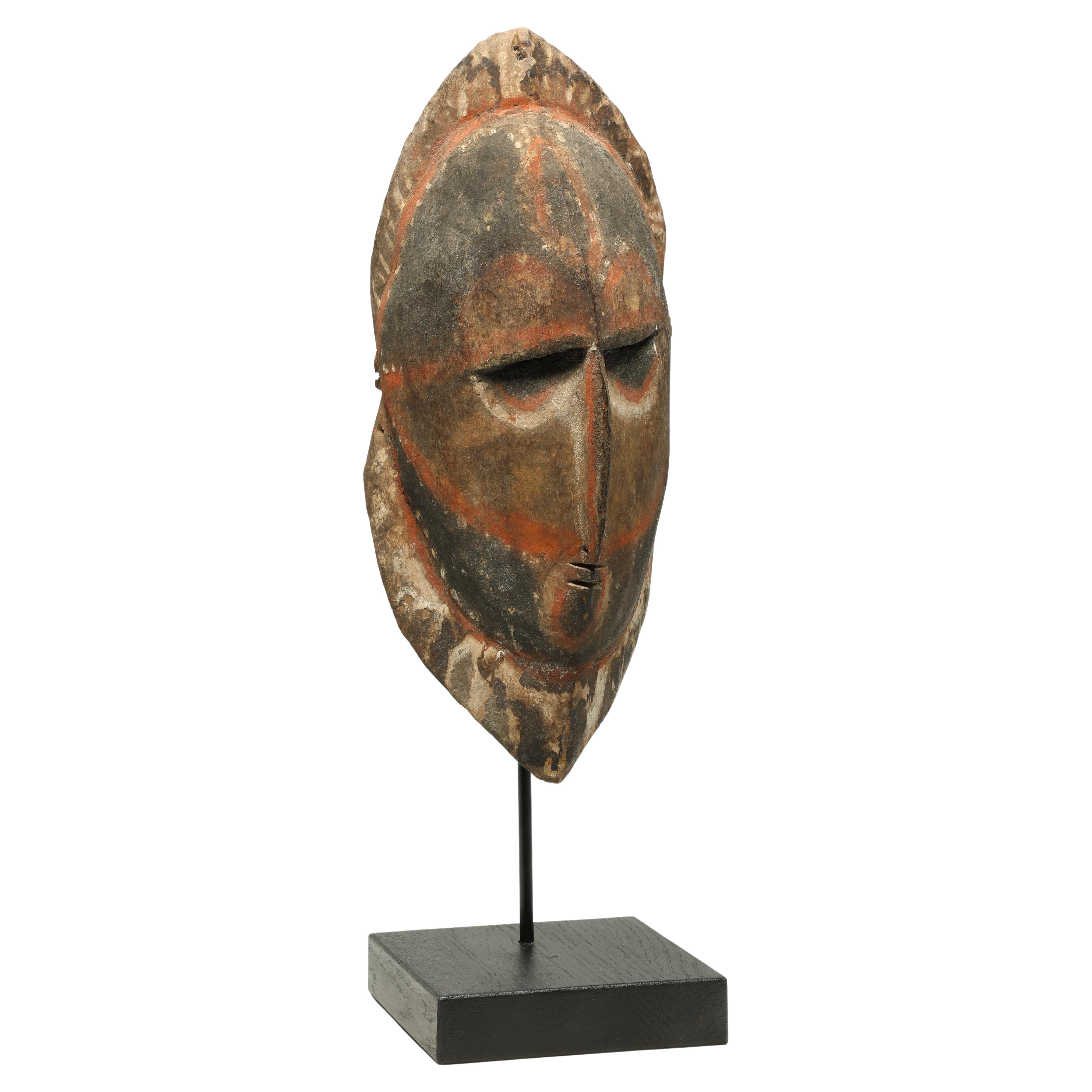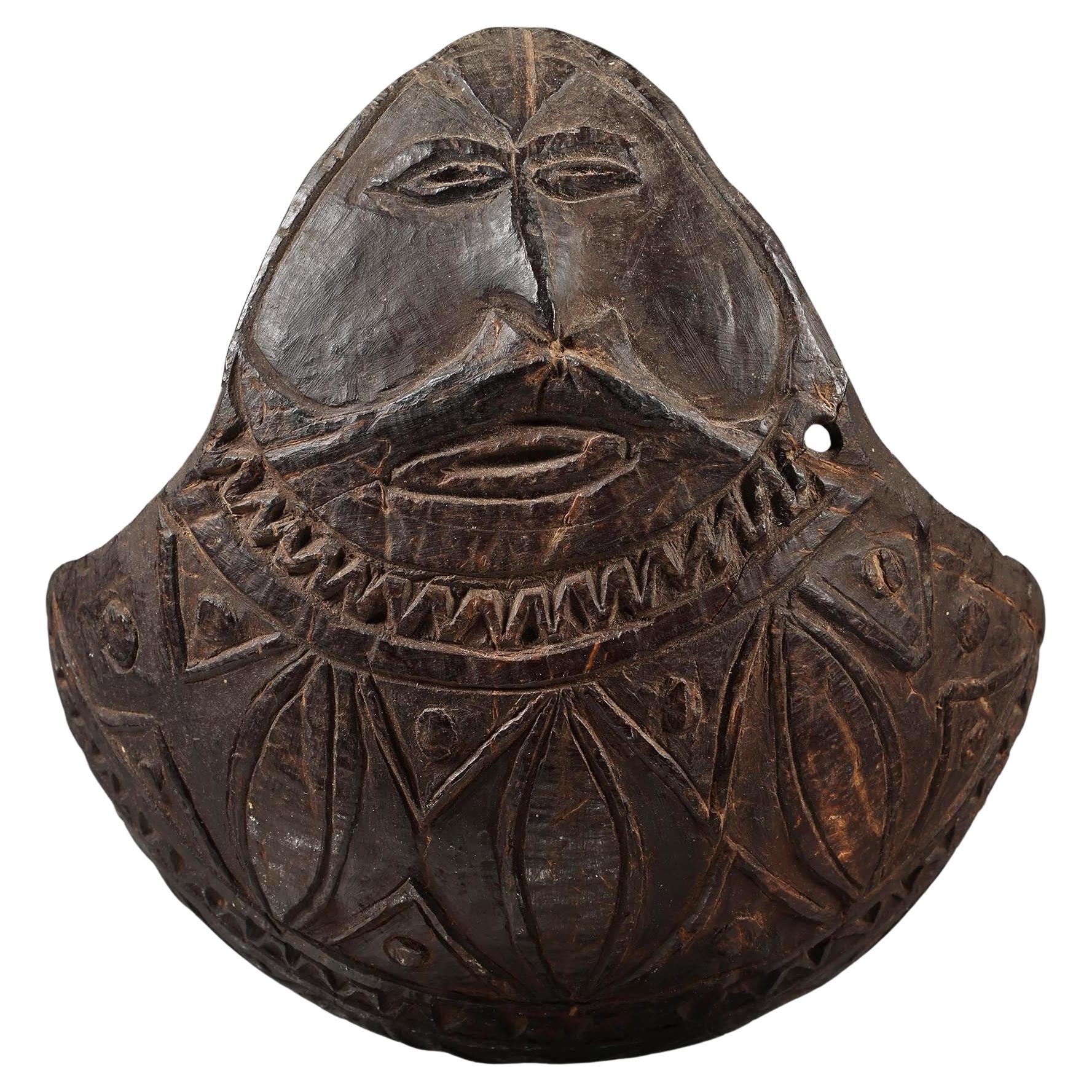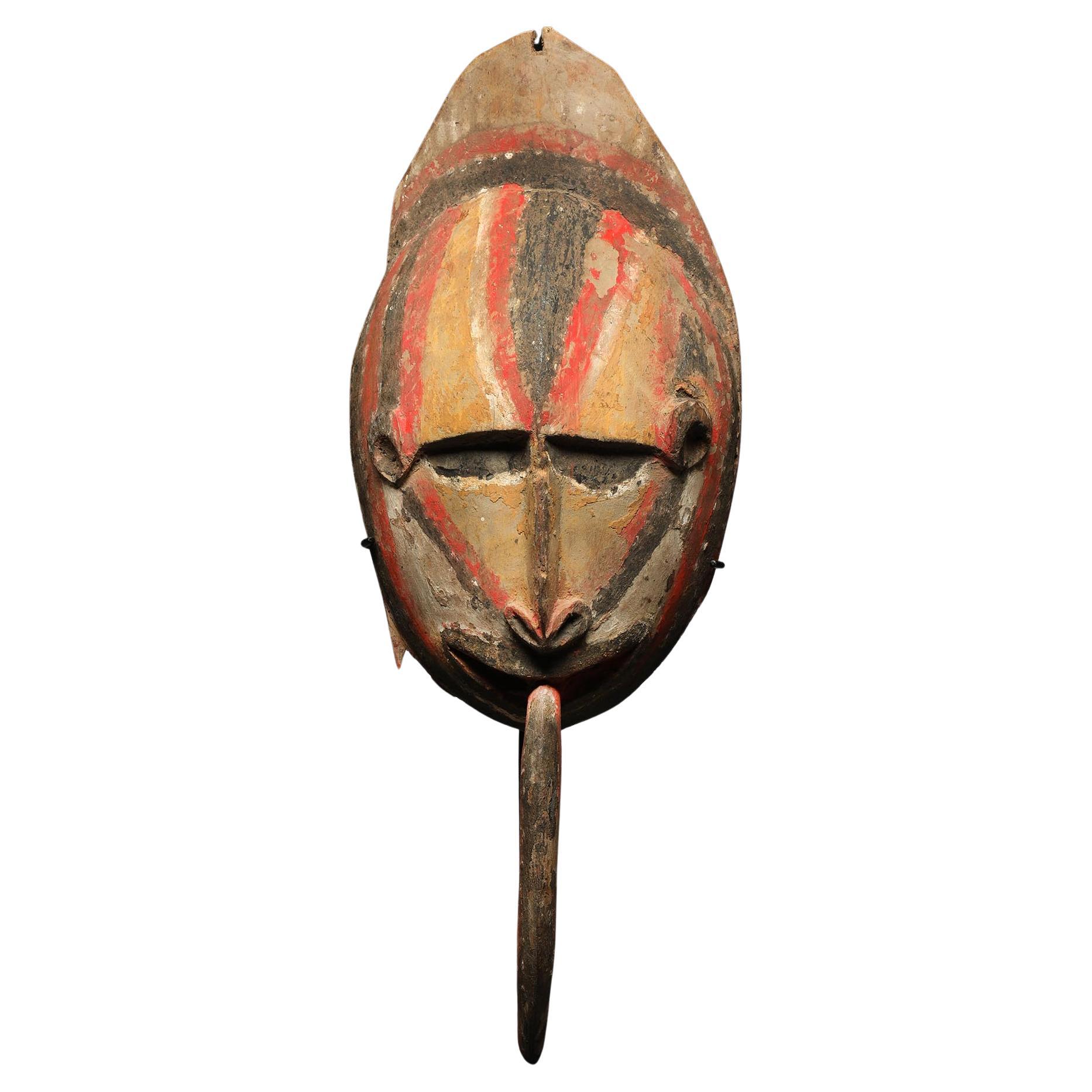Items Similar to Stirrup Vessel Wood Hand- Carved Massim People Papua New Guinea
Video Loading
Want more images or videos?
Request additional images or videos from the seller
1 of 20
Stirrup Vessel Wood Hand- Carved Massim People Papua New Guinea
About the Item
Wood Carved Stirrup Vessel, or Pipe, Massim people, Trobriand Islands, Papua New Guinea.
Hand-carved wood in the form of a large animal with a top circular hollow wood tube carved with human faces on each side.
Early 20th century.
Highly Collectible Museum Piece.
Collected from the Massim Tribe (Papua New Guinea),
Circa 1920’s or before.
From the Art collection of Marian and John Scott.
Acquisition date: 1960s.
Purchased from the amazing private collection of Mark Lissauer who spent his life collecting niche ethnographic pieces.
About Mark Lissauer:
Mark Lissauer spent forty years travelling abroad for months at a time collecting ethnographic artefacts primarily from New Guinea and the islands of the West Pacific, and from Asia and Himalayan countries. Fluent in five languages and having in the course of business travelled to more than forty countries, Mark is well-known to museums and art-collectors around the world for his long career and his interesting and diverse collection of rare ethnographic material.
Mark knows the origin and symbolism of each piece. Through extensive research and more than ninety trips around the globe, Mark familiarised himself with the traditions of the various cultures he visited in order to understand the meaning of each object to its region and tribe. His home has a specialist library and several rooms are filled with tribal carvings, textiles and ethnographica.
He acquired his first tribal piece in 1948 during a business trip to Milne Bay, New Guinea, and has since documented the acquisition of some 35,000 items. Several thousands of these have been sold to important private collections and museums worldwide, including the Rockefeller Museum, the British Museum and the Musée National des Arts d’Afrique et d’Océanie, now incorporated into the Louvre Museum.
- Dimensions:Height: 10 in (25.4 cm)Diameter: 3 in (7.62 cm)
- Style:Tribal (In the Style Of)
- Materials and Techniques:
- Place of Origin:
- Period:
- Date of Manufacture:1920
- Condition:Wear consistent with age and use.
- Seller Location:North Hollywood, CA
- Reference Number:
About the Seller
5.0
Platinum Seller
These expertly vetted sellers are 1stDibs' most experienced sellers and are rated highest by our customers.
1stDibs seller since 2011
2,640 sales on 1stDibs
Typical response time: 1 hour
- ShippingRetrieving quote...Ships From: North Hollywood, CA
- Return PolicyA return for this item may be initiated within 7 days of delivery.
More From This SellerView All
- Hand Carved Wood Moroccan Ethnic Large SpoonBy Berber Tribes of MoroccoLocated in North Hollywood, CAHand Carved antique African Moroccan burl wood large spoon. Large Moroccan ethnic folk art hand crafted and carved large cooking spoon. Great patina, rou...Category
Early 20th Century Moroccan Folk Art Sculptures and Carvings
MaterialsWood
- African Folk Art Hand Carved Sculpture Fork and SpoonLocated in North Hollywood, CAHand carved African tribal wood carved sculpture of a men and women, Africa tribal Art Decor. Kenyan tribal sculpture featuring an elongated standing man and women with a crown and metal choker. Very simple modern look carved ethnic sculpture...Category
20th Century Kenyan Folk Art Sculptures and Carvings
MaterialsWood
- Vintage African Pair of Wooden Hand Carved Busts SculpturesBy Karl HagenauerLocated in North Hollywood, CAWood sculpture hand carved vintage tribal Folk Art bust of an African men and women sculptures. Pair of vintage handcrafted wood sculptures of African men and women bust with headdress and jewelry. These two busts depict tribal African couple...Category
Mid-20th Century African Folk Art Sculptures and Carvings
MaterialsHardwood
- Vintage Brazilian Hand-Carved Ironwood Sculpture of Whale and a SharkLocated in North Hollywood, CAVintage Brazilian hand carved Ironwood sculpture of a whale and a shark. Hand carved Brazilian sculpture hand crafted in amazing detail from one of...Category
Mid-20th Century Brazilian Folk Art Sculptures and Carvings
MaterialsWood
- Antique Ethnic Tribal Kina Crescent Shell Necklaces Papua New Guinea Set of 3Located in North Hollywood, CAAntique Collectible Ethnic Tribal Folk Art Crescent Shell Pieces Choker Necklaces from Papua New Guinea. Shell pieces cut from the gold lipped pearl oyster found off the waters of Papua New Guinea. Their opalescent color ranges from deep gold yellow to pale yellow. Each is pierced at the crescent point for a cord attachment enabling the owner to wear them singly or together around the neck. One had a line of holes along the inner edge of the crescent as a decorative feature. Highly Collectible Museum Pieces, worn by men and women rare old Kina Shell Necklaces (Huge Mother of Pearl Crescent) Pectoral Collected from the Foi Tribe (Papua New Guinea), Circa 1920’s. From the Art collection of Marian and John Scott. Acquisition date: 1969. Evaluation date records: 1982. About: For the people of the Highlands, shells were considered treasures. As they were items that came from distant shores of Papua New Guinea they were already objects used for trade. The number one source of mother of pearl wealth was and is still is from the Thursday Island, one of the chain of Island that suggests the ancient land bridge across the Torres Straits from Cape York, Australia to New Guinea. They were fashioned into objects of adornment worn on costumes, hair, nose, etc. Of particular rarity was the gold lipped pearl shell. References: Plumes and Arrows, Inside New Guinea, COlin Simpson, Angus and RObertson, 1968. CATEGORY Anthropology: Ethnography. Tribal Kina Shell Pectoral Necklace, Pearl shell ornamentation (neck). Kina (shell money) Oject part of Pacific Cultures Collections. Purchased from the amazing private collection of Mark Lissauer who spent his life collecting niche ethnographic pieces. About Mark Lissauer: Mark Lissauer spent forty years travelling abroad for months at a time collecting ethnographic artefacts primarily from New Guinea and the islands of the West Pacific, and from Asia and Himalayan countries. Fluent in five languages and having in the course of business travelled to more than forty countries, Mark is well-known to museums and art-collectors around the world for his long career and his interesting and diverse collection of rare ethnographic material. Mark knows the origin and symbolism of each piece. Through extensive research and more than ninety trips around the globe, Mark familiarised himself with the traditions of the various cultures he visited in order to understand the meaning of each object to its region and tribe. His home has a specialist library and several rooms are filled with tribal carvings, textiles and ethnographica. He acquired his first tribal piece in 1948 during a business trip to Milne Bay, New Guinea, and has since documented the acquisition of some 35,000 items. Several thousands of these have been sold to important private collections and museums worldwide, including the Rockefeller Museum, the British Museum and the Musée National des Arts d’Afrique et d’Océanie, now incorporated into the Louvre Museum. Estimator certificate of authenticity by Wayne Heathcote Tribal Art Dealer and Expert. Heathcote has a flash gallery in Brussels, where much of the tribal art business is centred, and is an expert at Sotheby's tribal art sale...Category
Early 20th Century Papua New Guinean Tribal Collectible Jewelry
MaterialsShell, Abalone, Mother-of-Pearl
- Antique Ethnic Artifact Sepik River Cassowary Bone from Papua New GuineaLocated in North Hollywood, CAAntique Ethnic Artifact Sepik River Cassowary Bone from Papua New Guinea For many groups in Papua New Guinea, bone was an important medium for making tools of all types. This artifact is made from leg bone of a cassowary, a large, flightless, and extremely dangerous, bird. Cassowaries also play an important role in the mythology of groups in the Sepik River area. Though no longer used these bone artifacts are still used ceremonially. They often play important roles in male initiation and other rituals. They are also worn as personal adornment by tucking them into a band of braided fibers worn around the upper arm. Antique Ethnic Bone Cassowary Artifact with minimal carving and incised design confined to the joint end. A small hole has been drilled through from both sides of the top and presumably for the threading of a cord. The bone has been partially divided near the top and to form two prongs that project down the back of the dagger possibly allowing the user to wear is tuck into a waist band or belt. Origin Papua New Guinea Maprik Dist Area From the Art Collection of Marian and John Scott, acquired in 1962. Similar items are in display in the Timothy S. Y. Lam Museum of Anthropology. Purchased from the amazing private collection of Mark Lissauer who spent his life collecting niche ethnographic pieces. About Mark Lissauer: Mark Lissauer spent forty years travelling abroad for months at a time collecting ethnographic artefacts primarily from New Guinea and the islands of the West Pacific, and from Asia and Himalayan countries. Fluent in five languages and having in the course of business travelled to more than forty countries, Mark is well-known to museums and art-collectors around the world for his long career and his interesting and diverse collection of rare ethnographic material. Mark knows the origin and symbolism of each piece. Through extensive research and more than ninety trips around the globe, Mark familiarised himself with the traditions of the various cultures he visited in order to understand the meaning of each object to its region and tribe. His home has a specialist library and several rooms are filled with tribal carvings, textiles and ethnographica. He acquired his first tribal piece in 1948 during a business trip to Milne Bay, New Guinea, and has since documented the acquisition of some 35,000 items. Several thousands of these have been sold to important private collections and museums worldwide, including the Rockefeller Museum, the British Museum and the Musée National des Arts d’Afrique et d’Océanie, now incorporated into the Louvre Museum. Estimator certificate of authenticity by Wayne Heathcote Tribal Art Dealer and Expert. Heathcote has a flash gallery in Brussels, where much of the tribal art business is centred, and is an expert at Sotheby's tribal art sale...Category
Early 20th Century Folk Art Tribal Art
MaterialsBone
You May Also Like
- Papua New Guinea Carved-Wood Lumi Shield on Custom Iron StandLocated in Atlanta, GAA Papua New Guinea carved-wood Lumi shield from the mid-20th century. This vintage war shield from the West Sepik region, the northwestern most province of...Category
Mid-20th Century Papua New Guinean Sculptures and Carvings
MaterialsIron
- Early Papua New Guinea Painted Maprik Wood Mask Curves Old PigmentsLocated in Point Richmond, CAEarly Papua New Guinea painted Maprik carved hard wood mask. Mid-20th century, with wonderful curved expressive asymmetrical face. Long nose with pierced septum. Faded polychrome pig...Category
Mid-20th Century Papua New Guinean Tribal Tribal Art
MaterialsOrganic Material, Wood
- Large Early Papua New Guinea Carved Coconut Scoop or Spoon with FigureLocated in Point Richmond, CALarge Early Papua New Guinea Carved Coconut Scoop or Spoon with Figure Scoop is 3 x 4 3/4 x 4 3/4", on custom wood and metal base total height 7 1/2 inches. Large carved expressive f...Category
Mid-20th Century Papua New Guinean Tribal Tribal Art
MaterialsOrganic Material
- Early Papua New Guinea Painted Maprik Wood Head or Mask, Strong ExpressionLocated in Point Richmond, CAFrom Papua New Guinea an early painted Maprik carved wood head sculpture or mask, intense expression showing teeth, and two opposing stylize...Category
Mid-20th Century Papua New Guinean Tribal Tribal Art
MaterialsOrganic Material, Wood
- Early Papua New Guinea Painted Maprik Wood Mask Long Tongue Ex M. HamsonLocated in Point Richmond, CAEarly Papua New Guinea painted Maprik carved wood mask with long curved tongue. Mid-20th century, ex Michael Hamson, CA with label on back. Classic Maprik colors with faded polychrom...Category
Mid-20th Century Papua New Guinean Tribal Tribal Art
MaterialsOrganic Material, Wood
- Early Papua New Guinea Sepik Hard Wood Yam Mask Red and BlackLocated in Point Richmond, CAEarly Papua New Guinea Sepik hard wood yam mask with areas of red, black and white pigments. Mask is 10 inches high, on custom metal base total height 12 1/2...Category
Mid-20th Century Papua New Guinean Tribal Tribal Art
MaterialsOrganic Material, Wood





